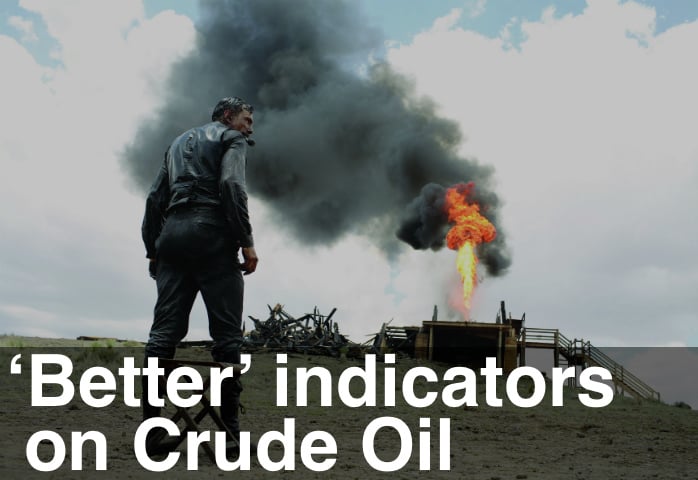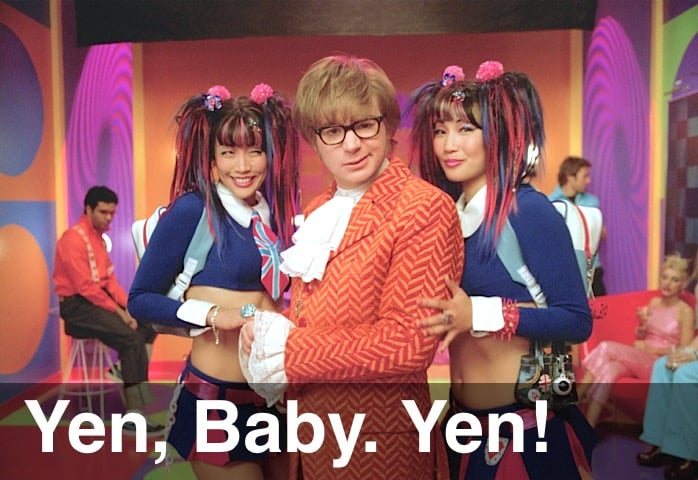If you’re in a non-US time zone, Forex could be the market for you.
Here’s a great email from a Forex trader, Petr S., on how he uses the ‘Better’ indicators to trade Forex and the improvement in his results:
Barry, I want to express my most sincere thanks for your truly outstanding work and dedication to share your trading research and approach with trading community. I am a full time forex trader with aspirations to increase my trading account allowing me to switch eventually from spot forex to futures to fully utilize the power of your indicators.
Petr. S
Upon detailed study of all the information available on your site, I realized that for forex trading switching from my range bar charts to tick charts, using 3 timeframes for reference and adding the Better Sine Wave would be the most useful adjustments to my charting set-up.
Here is the comparison of several metrics for 8 trading days before charts adjustments and Better Sine Wave installation and 8 days after:
8 days before: 81 trades taken with average 10.1 trades per trading session, 2 profitable days out of 8, daily average 0.03 pips.
8 days after: 73 trades taken with average 9.1 trades per trading session, 7 profitable days out of 8, daily average 13.4 pips. Talk about dramatic improvement!
Barry, once more, thank you very much for your work and I wish you the very best in your trading and personal life.
Normally I’m a real purist about trading the Emini – simply put, it’s the perfect trading vehicle. But I’m biased and I think it’s clouded my judgement about Forex. My typical response is “don’t trade Forex because there’s no volume data”. I need price, volume traded at the bid/ask and average trade size to have a complete view of what’s happening. Price alone or price plus tick count (as a proxy for volume) aren’t enough.
But I’ve been ignoring Forex futures traded on the CME Globex. The video above shows how to use the ‘Better’ indicators for Forex trading.
Video Transcript
I’m going to do something a little bit different in this video. I’m frequently asked: “Do the ‘Better’ series of indicators work on Forex markets?” and I’ve recently kind of changed my tune on this. Historically I’ve been a bit of a zealot, a purist in terms of just trading the Emini, but I’m going to show you what my current thinking is in terms of the Forex markets.
First of all, just need to recap very quickly the ‘Better’ series of indicators. There’s the Better Sine Wave, which is based on price alone. Then we’ve got Better Momentum which is based on the volume traded at the bid and the ask. Then Better Pro Am which is based on the average trade size. The beauty of these three indicators is they’re non-correlated. They’re each looking at a very fundamentally different piece of data and so you get maximum amount of information with the minimum number of indicators.
Traditionally what I’ve said about Forex is, “Well, because we don’t have volume data, we can’t tell the average trade size”. We can’t tell the volume trend at the bid and the ask. We should avoid the Forex markets. The very best you can do is use tick count, a proxy for volume. However, I’m starting to rethink that and the reason for that is the advent of the growth in the Forex futures markets that’s happening on the CME. I’ll show shortly some volume trends that are happening there and they’re starting to become more representative of the cash Forex markets. Most of the Forex market trading that goes on around the world is the interbank Forex market, there’s no central exchange, there’s no clearinghouse and as a result there’s no volume disseminated to traders.
However, there are futures contracts for the Forex markets and they’re traded on the CME and they’re starting to become larger and a bigger part of that market. And I believe they’re starting to become more representative and you can use it to trade using the ‘Better’ series of indicators.
The other problem that I’ve had with Forex, kind of historically, is that you’ve got too many decisions. With Emini trading you’ve got one market to look at. All of the equity markets are tightly correlated, whether you’re looking at the Dow, the S&P, the NASDAQ, the Russell and so on. Then even across different markets, so if you’re looking at the DAX, if you’re looking at the Spi in Australia, whatever it might be. All of those equity markets tend to move quite closely together.
With Forex, because you’ve got a dozen different pairs out there, you’ve got far too many decisions to make and again, I’m starting to rethink this. Just like the equities markets being highly correlated, a lot of the Forex markets are highly correlated and they kind of break down into two different camps. The first one is the risk or the growth camps, which are things like the Euro, the Aussie Dollar, the Canadian dollar, Brazilian Real. They represent markets where people go to get high growth, to find risk plays and to take more risk in their trading. Versus the flight to safety currencies or the currencies that are being used to fund carry trades and the largest one of those is the Yen because of the low interest rates in Japan. Then recently, we’ve added the US dollar again because of the low wholesale funding rates.
What that means is you should not be trading currencies within a particular grouping – so not the Euro versus the Aussie or the Aussie versus the Canadian Dollar because they’ll be very tightly aligned. You should be trading across those two kinds of categories, so you should be trading the US Dollar versus the Euro or the Canadian Dollar versus the Euro or the Aussie Dollar versus the Yen.
The largest Forex market out there is the Euro versus the US dollar and that represents almost 60% of the total Forex market. So if you wanted to trade Forex, why not stick with something that represents a huge part of the market and you don’t have to worry about the other smaller components of the market?
The other choice is to go for something which has very large ranges because of the nature of the two different markets and a good example there is the Aussie versus the Yen. The Aussie is a high growth currency so when people are looking for exposure to growth they’ll go to the Aussie and then they’ll fund that in Yen. So you’ll get a very large differential in movements between the Yen and the Aussie compared to something like the Euro and the USD. The moves aren’t as great as the Aussie and the Yen but the total size of the Aussie/Yen market is smaller. So the Euro/USD is a good compromise and I’m starting to think that if you were just to trade one Forex market you’d stick with the Euro/USD and that would be the equivalent to trading the Emini as representative of all the equity markets around the world.
Then the last criticism I’ve traditionally had is that it’s a 24 hour market. In the Forex market you have to be on your toes in order to catch moves in the right time zones and there are pros and cons of that. One of the pros is that you can actually choose a currency pair that actually works for your particular time zone. In the US time zone the natural trade would be something like the US Dollar versus the Euro. If you’re in, for example, the Asian time zone the Aussie versus the Yen is an extremely good currency pair in that particular time zone.
So I’m starting to change my tune in terms of trading Forex. My preferred market is always going to be the Emini, no question there, but when I’m asked the question now these days “Do the ‘Better’ series of indicators work on the Forex markets?” I’m beginning to say “Yes” because you can use the Forex futures contracts which has volume data. Then you can trade one or two Forex pairs and get rid of the ‘too many decisions’ type problem.
Just as an example I’m going to show you how big the futures market is versus the cash market. These numbers are a little bit difficult to get behind because we don’t have absolutes here. As an example, in the cash market, the interbank Forex market, there’s roughly $4 trillion US Dollars traded a day, in that total market around the world.
Then if you think that there’s about 21 trading days a month, roughly 60 percent of that market is Euro versus USD. That gives you a figure of about $50 trillion traded per month in the Euro/USD contract. Then you could compare that with the futures market. We know the total, the average volume traded at the moment is about 6 million contracts a month. Each of those contracts is trading a notional value of 125,000 Euros and then just using a rate of $1.35 USD to the Euro that gives you about one trillion per month of the Euro versus the USD. Do you can see that the futures market is still extremely small. It only represents about 2% of the cash market, however, I’m going to show you some charts on TradeStation to show you how, even though it’s a much smaller market, you can still take trades using the ‘Better’ series of indicators and using the volume data that comes from the CME futures contract.
Now I’m going to show you some TradeStation charts for the CME futures Forex contracts and the first one I’m going to show you is the EC contract and I’ve just brought up a long term chart here. This is in TradeStation @EC which gives you the continuous contract for the Euro versus the US dollar. Sometimes this is referred to as the 6E contract on Globex. In TradeStation they’re identical so the EC is the pit traded and the 6E is the Globex traded, just the data that comes through TradeStation is all represented on the EC symbol.
You can see that there’s been actually some pretty rapid growth over the last 18 months or so. We had a lot of activity a couple of months ago in the Euro when we got up above 9 million contracts traded in a month here. But we’re starting to average about 6 million contracts traded on the CME Globex exchange on those futures contracts. That’s starting to get decent size volume that we can start to use for the ‘Better’ series of indicators.
When I compare that with the Emini Euro contract. This is the E7 contract, again a continuous contract @E7 on TradeStation, you can see here the volumes that are going through are only about 100,000 contracts – so it’s a lot smaller than the EC contract. Then the other contract that’s available on the CME exchange is the M6E contract here. There’s not a continuous version of this one so I’ve just plotted this latest one, just showing the last month of data here. This is even smaller still. This is known as the micro contract on the CME and here we’re only trading about 40,000 contracts in a month so extremely small. But if we go back to the EC contract, the Globex Euro contract, that’s a pretty decent size at 6 million contracts traded. We know the Euro’s the largest contract traded.
What about the British Pound? Similar chart here. Just looking at monthly volumes traded we were trading about 6 million on the Euro. The equivalent number for the Pound so this, again, using TradeStation symbols @BP for the British Pound here. This is only trading about two and a half million contracts so it’s less than half the size of the Euro. So again another reason to trade the Euro. Lots of liquidity there and that’s fairly representative of what’s going on in the cash market.
The question becomes, “Well what should, if I’m going to use the ‘Better’ series of indicators, the settings be that I use?” Now, I’ve shown you this chart trick before in previous videos and this is just looking at the total number of contracts traded for a particular market. On the left-hand side here, what I’ve brought up is a 24 hour chart of the Emini, so it’s the @ES continuous contract, 1440 minutes which is 24 hours. So that shows me the total amount of activity in a day, a 24-hour period. Then what I’ve done here is, rather than look for trade volume I’m counting the number of ticks. So it says for volume us tick count here. You can see that during a day we’d have, on average, about 500,000 ticks or trades during a 24-hour period in the Emini. I use that just as a rough rule of thumb. If my lowest time frame that I’m using for my day trading is at 500 tick bar chart I multiply by three to get 1,500 and three again to get 4,500. Those are my three day trading time frames.
If 500 is the starting point for an Emini series of charts, what would the starting point be for the Euro? Again the futures Euro contract here. I’ve brought up exactly the same chart, a 24-hour chart of the @EC contract here. You can see on average we do 200 or 250,000 trades during a day. If we’re using 500 as our starting point in terms of tick count for the lowest timeframe chart, what I’d suggest using for the Euro is a 250 tick bar chart.
Let me just bring up what I suggest as your day trading time frames here. I’d start with a 250 tick bar chart, three times that is 750, that would be my intermediate tick bar chart for the Euro and three times that is 2,250. Those would be equivalent to my 500, 1,500 and 4,500 on the Emini, so using 250, 750 and 2,250.
The question is “Well, do the signals work just as well with the Euro futures contract as it does with the Emini?” This is a live chart happening at the moment and we’ve just had a beautiful trade set up on this chart and I’m just going to show you this one here.
You can see that on this time frame here we have an ‘end of trend’ warning signal on the intermediate time frame down here. Just prior to that we’d had our exhaustion selling. Here’s Better Momentum showing our exhaustion selling down here and at this ‘end of trend’, it’s a cool turning point. We’ve got a bullish divergence point here. We’ve got stopping volume and a no supply signal down here plus all of these professional blue bars down at the low.
We also know on this highest timeframe here that we’ve got a cyclical turning point happening, we’ve got professional down blue bars showing that there’s professional accumulation happening at that point, and then when you back it down to the 250, the lowest timeframe chart, you can see that the bottom was made with, first of all we pushed down to this level here with a professional bar here, we came back into those lows. We had a professional blue bar saying the professionals were accumulating here. No supply at that point, bullish divergence on better momentum and then just testing there with amateur bars.
Again, love these kinds of patterns where we get professionals first taking profits, getting long at this point, the amateurs, kind of testing back down on lows, expecting new lows to be made, getting wrong footed as soon as we get a break below the highs of those amateur bars, that’s a kind of good entry signal.
It’s all lining up. We’ve got these cyclical patterns lining up. We’ve got Better Momentum lining up. We’ve got the professional and the amateur bars lining up and look, this move just took off to the upside. There we go. I was just continuing up so a really nice trade set up and this was just happening in real time as I started to record this video this afternoon.
Those would be my suggestions for day trading time frames for Forex, on the Euro. For the longer time frame charts, look at the equivalent up to my 40,500 tick bar chart on the Emini. I’d suggest starting again with this kind of highest timeframe on the day trading charts, so at 2,250, three times that, 6,750 and then three times that is 20,250. Again, you’ll be able to see these kind of moves happening on these larger time frames to give you a better sense of trend direction and that on the Euro here we’ve been in an uptrend. We’ve kind of had exhaustion buying at this point we backed on down here to some kind of cyclical support in this lowest timeframe and this last move was just taking off to the upside here and you can see the chart just updating in real time.
Then the beauty of this is you can use exactly the same type of methodology to look at swing trading charts. So again, favorite swing trading timeframes that I look at for either stocks or commodities or whatever, you could use these for the Forex contracts as well: daily, weekly and monthly. There’s not an exactly three times ratio between these but it’s good enough. It’s close enough and you can see the big patterns here that the Euro was bottoming in terms of a cyclical turning point, monthly cyclical turning point here on the monthly chart. All the professional exhaustion selling at these points and so on.
The bottom was made here on a weekly chart with a RAMBO pattern. Love these RAMBOs, the reversal of an amateur breakout. There are amateurs being wrong-footed right at the low. They’re thinking the market’s going to continue down past 119, takes off to the upside and then here it is on the daily chart. That would be my suggestion, to use those kinds of time frame tick bar settings for the Euro charts and you can use exactly the same type of methodology to determine what your tick bar settings will be for the British Pound, the Aussie, the Yen and so on.
Hopefully that’s helpful. In general I’m starting to change my tune, become less of a fascist in terms of not trading Forex and saying: “Well the ‘Better’ series of indicators are robust, they’ve not been optimized for the Emini, they’re designed for any market and any time frame as long as you have volume data, the volume traded at bid and ask and average trade size.” It looks like we’re getting that data through the CME futures Forex contracts and it seems to be pretty representative of the cash market, so I’d suggest looking at these if you’re interested in trading Forex.
Euro Futures Symbol – What is the difference between 6E and EC?
I really think the CME have made life difficult for Forex traders with different Euro futures contract symbols.
In their contract specifications they list two different contracts: 6E and EC. But then in their daily volume reporting there is no mention of the 6E contract, only EC. To make things worse, NinjaTrader and most other trading platforms call Euro futures data using the 6E symbol, but TradeStation only ever uses the EC symbol.
And on top of that, the Mini and Micro Euro contracts are traded via the CME on Globex. These really are so small that it’s almost useless even bothering to have them. Another thing the CME might think about cleaning up.
So, unless I am told otherwise, I will assume that the 6E and EC symbols are identical. It just depends on which data provider and charting platform you’re using.
Improved Continuous Contract Symbols
For Forex futures, we recommend using optimized continuous contract symbols that roll on the 2nd day before expiry – when volume shifts to the new front-month contract. For example, to do this for Euro futures use:
- Tick charts: @EC=102XC
- Minute charts: @EC.D=102XC
This avoids TradeStation’s default 3rd-day roll, which can include data from the prior, less liquid contract.



